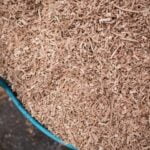Are you wondering how to prepare logs for woodworking? Properly preparing logs for woodworking is a crucial step in the process of creating beautiful and durable wood creations. In this article, we will explore the essential steps involved in preparing logs for woodworking, from selecting the right type of wood to treating the wood for preservation.
Selecting the Right Logs is the first step in ensuring the success of your woodworking project. The type of wood you choose will greatly impact the final result. We will discuss how to identify the best type of wood for your specific woodworking project, taking into account factors such as durability, workability, and appearance.
Once you have selected the right logs, Cutting the Logs is a critical skill that requires safety and accuracy. We will provide techniques for safely and accurately cutting logs into workable pieces, ensuring that you can make the most out of your material while minimizing waste. Beyond this, we will also cover how to effectively strip away bark and debris from the logs and properly dry them to prevent warping or cracking.
Additionally, we will provide tips on planing and smoothing the wood as well as preserving it from pests and decay. Join us in this comprehensive guide and learn all about properly preparing logs for woodworking.
Selecting the Right Logs
The first step in preparing logs for woodworking is selecting the right type of wood for your project. Different types of wood have different characteristics that make them suitable for specific uses in woodworking. When choosing logs, it’s essential to consider factors such as the type of project you are working on, the desired appearance of the finished product, and the wood’s durability.
Hardwoods like oak, walnut, and maple are popular choices for furniture making due to their strength and attractive grain patterns. Softwoods like pine and cedar are often used for building construction and outdoor projects because they are easier to work with and more resistant to rot. It’s important to carefully research and select the type of wood that best suits your particular woodworking project.
Once you have identified the best type of wood for your project, you can then move on to the next steps in preparing the logs for woodworking. This includes safely cutting the logs into workable pieces, removing bark and debris, drying the wood, planing and smoothing the surface, treating the wood for preservation, and finally using the prepared logs to create beautiful woodworking creations.
Understanding how to prepare logs for woodworking is crucial in ensuring a successful outcome for your projects.
Cutting the Logs
To effectively cut logs into workable sizes, consider the following techniques:
- Measure and mark: Before cutting the logs, carefully measure and mark where you want to make the cuts. This will ensure that your pieces are consistent in size and fit together properly.
- Proper saw use: When using a chainsaw or bandsaw, make sure to follow all safety guidelines and wear appropriate safety gear. Use steady, even pressure when cutting through the log to prevent accidents.
- Support the log: When cutting larger logs, it’s important to have them properly supported to prevent them from rolling or shifting during cutting. Use sawhorses or other support systems to stabilize the log before cutting.
Following these techniques will ensure that you can safely and accurately cut logs into workable pieces for your woodworking project. As always, practice caution when working with any kind of saw, and seek professional advice if you are unsure about how to prepare logs for woodworking.
Removing Bark and Debris
Tools and Equipment Needed
Before you begin the process of removing bark and debris from your logs, it’s important to gather the necessary tools and equipment. This may include a drawknife, chisel, hammer, and wire brush. Additionally, you may want to consider using a pressure washer for larger logs or those with stubborn debris.
Techniques for Bark Removal
When it comes to removing the bark from your logs, there are several techniques you can use. One popular method is using a drawknife to shave off the bark in long strips. Another option is to use a chisel and hammer to carefully chip away at the bark. For particularly stubborn or thick bark, a pressure washer can be used to effectively blast away the debris.
Cleaning the Surface
Once the bark has been removed, it’s important to thoroughly clean the surface of the logs. This can be done using a wire brush to remove any remaining debris or dirt. In some cases, you may need to lightly sand the surface of the wood to ensure it is smooth and free of any rough patches.
By effectively removing bark and cleaning your logs, you can ensure that they are ready for further processing in your woodworking projects. Whether you plan to air dry or kiln dry your wood, this initial step is crucial in ensuring the quality of your final product.
Drying the Wood
Properly drying logs is a crucial step in preparing wood for woodworking projects. If the wood is not dried appropriately, it can warp or crack, rendering it unusable for many projects. There are several methods for effectively drying wood and preventing these issues.
One method for drying logs is air-drying. This involves stacking the logs outdoors with spacers in between to allow proper air circulation. Air-drying can take anywhere from 6 months to 2 years, depending on the type of wood and its thickness. This method is cost-effective but requires patience.
Another method is kiln-drying, which is a faster process than air-drying. Kiln-drying involves placing the logs in a controlled environment where temperature, humidity, and airflow are regulated to dry the wood quickly and evenly. While kiln-drying may be more expensive than air-drying, it is often preferred for its efficiency.
Regardless of the method chosen, it’s essential to monitor the moisture content of the wood throughout the drying process to ensure that it reaches an appropriate level for woodworking. A moisture meter can be used to regularly check the moisture content of the logs as they dry.
Planing and Smoothing
Understanding the Planing Process
Before using logs for woodworking, it is essential to properly plane and smooth the wood to ensure a professional and polished finish. Planing is the process of removing imperfections, irregularities, and rough spots from the surface of the wood. This step is crucial in creating a clean and even surface for your woodworking project. By utilizing a hand plane or electric planer, you can achieve a smooth and uniform finish on your prepared logs.
Choosing the Right Planing Tools
When preparing logs for woodworking, it is important to select the right planing tools for the job. Hand planes come in various sizes and types, each serving a specific purpose in smoothing out wood surfaces. Alternatively, electric planers are more efficient when dealing with larger or rougher logs. Whichever tool you choose, it is essential to ensure that it is sharp and properly adjusted to achieve the best results.
Smoothing Techniques
After the initial planing process, smoothing the wood is necessary to eliminate any remaining imperfections. This can be achieved using sandpaper or a power sander to create an even surface on the wood.
The key is to start with coarser grit sandpaper and gradually work your way up to finer grits until achieving a smooth and polished finish on the prepared logs. By taking these steps to properly plane and smooth your logs, you will be ready to move on to the next phases of your woodworking project with confidence.
Treating the Wood
When preparing logs for woodworking, it is crucial to properly treat the wood to preserve it and protect it from pests and decay. Without adequate treatment, your woodworking projects can be susceptible to damage and deterioration over time. Here are some essential steps for treating the wood to ensure its longevity and durability:
1. Apply a wood preservative: To protect the wood from decay and fungal growth, it is important to apply a wood preservative. There are various types of wood preservatives available, including oil-based and water-based options. Be sure to choose a preservative that is suitable for the type of wood you are working with.
2. Seal the ends of the logs: It is common for the ends of logs to absorb moisture more quickly than the rest of the wood, which can lead to cracks and splitting. To prevent this, seal the ends of the logs with a commercial sealer or even plain old paint. This will help slow down moisture absorption and minimize end grain checking.
3. Use insect repellent: Pests such as termites and beetles can cause significant damage to untreated wood. To keep these pests at bay, consider treating the wood with an insect repellent before using it in your woodworking projects. This will help protect your creations from potential infestations.
By following these steps for treating the wood, you can ensure that your woodworking projects will stand the test of time. Properly preserved and protected wood will maintain its quality and beauty for years to come, allowing you to create stunning pieces that will be cherished for generations.
Using the Prepared Logs
After following the necessary steps to properly prepare your logs for woodworking, you are now ready to start using them to create beautiful and functional woodworking projects. Once the logs have been selected, cut, cleaned, dried, planed, smoothed, and treated, it’s time to put them to good use.
The first step in using the prepared logs is to carefully measure and cut them into the desired dimensions for your woodworking project. Whether you are making furniture, decorative items, or structural elements, accurate measurements and precise cuts are essential for achieving professional-looking results. Using a reliable saw and taking your time with this step will ensure that you have the pieces you need to begin crafting your project.
Once your logs have been cut into the appropriate sizes and shapes, it’s time to start assembling them according to your woodworking plans. Whether you are using traditional joinery techniques or modern fastening methods such as screws or nails, take care to follow best practices for securing the wood together. Attention to detail at this stage will ensure that your finished project is both sturdy and visually appealing.
Finally, after all of your hard work in preparing and using the logs for woodworking, take a moment to admire the beauty of the natural wood grain and textures that you’ve preserved. Whether you choose to apply a clear finish to showcase the wood’s natural beauty or add a coat of paint or stain for a different look, be sure to protect your woodworking creation so that it can be enjoyed for years to come.
| Step | Description |
|---|---|
| Preparing | Measure and cut prepared logs into desired dimensions for project |
| Assembling | Secure wood pieces together according to woodworking plans |
| Finishing | Apply clear finish or paint/stain and protect the finished project |
Conclusion
In conclusion, preparing logs for woodworking is a critical step in the process of creating beautiful and durable wood creations. From selecting the right logs to treating the wood for preservation, each step contributes to the overall quality and longevity of the finished product. By following the techniques outlined in this article, woodworkers can ensure that their projects are not only visually stunning but also built to last.
Understanding the importance of properly preparing logs for woodworking begins with selecting the right type of wood for your project. Whether it’s hardwood or softwood, choosing the best option will impact the outcome of your creation. Additionally, learning how to effectively cut, remove bark and debris, dry, plane, smooth, and treat the wood are all crucial skills that contribute to a successful woodworking endeavor.
Ultimately, by taking the time to learn how to prepare logs for woodworking, individuals can unlock their creative potential and produce high-quality wood creations that stand the test of time. Remember that mastering these fundamental steps will not only enhance your woodworking skills but also ensure that your finished pieces are both functional and visually appealing.
Frequently Asked Questions
How Do You Prepare Wood for Woodwork?
Wood preparation for woodworking involves several steps. First, the wood should be properly dried to reduce moisture content, which can be done through air drying or kiln drying.
Then, the wood needs to be planed and cut to the desired dimensions using tools like saws and planes. Finally, sanding and sealing the wood is necessary to prepare it for the woodworking project.
How Long Should Logs Dry Before Being Used to Build?
Logs should ideally be allowed to dry for at least 6-12 months before being used for building. The drying process allows the logs to reach a moisture content that is suitable for construction, minimizing the risk of warping, cracking, or other issues once they are in use.
Properly dried logs also ensure a more stable and durable end result for the construction project.
Should You Let Logs Dry Before Milling?
It is highly recommended to let logs dry before milling them into lumber. This ensures that the wood has reached an appropriate moisture content before further processing, which helps prevent issues like shrinkage or warping in the milled lumber later on.
Allowing logs to dry before milling also improves the overall quality of the resulting lumber, making it more suitable for woodworking projects and construction purposes.

Hi everyone! I’m a woodworker and blogger, and this is my woodworking blog. In my blog, I share tips and tricks for woodworkers of all skill levels, as well as project ideas that you can try yourself.





